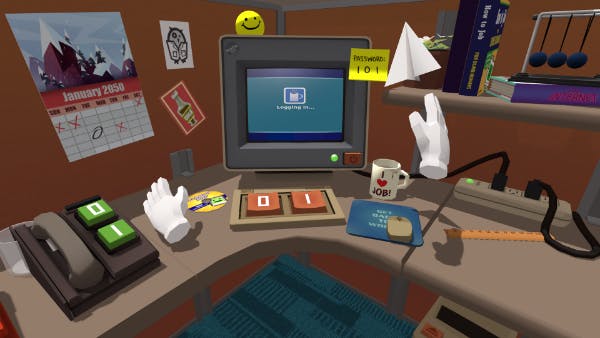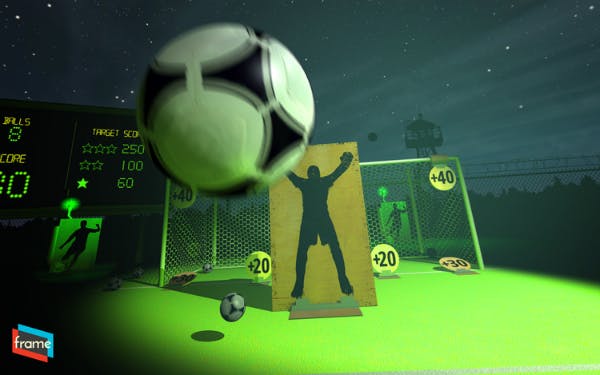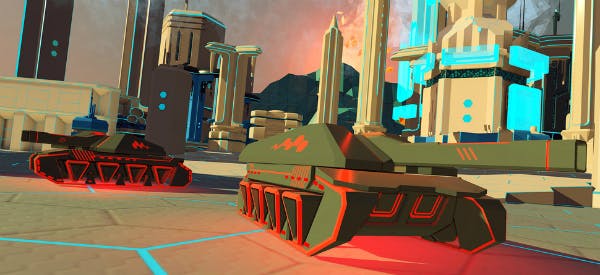PlayStation VR costs $200 less than the Oculus Rift, and $400 less than the HTC Vive. That probably makes you wonder: Are you getting a lesser product on account of the cost savings?
You definitely get what you pay for when it comes to virtual reality. The Vive’s room-scale capability has made it the center of several VR panels at the 2016 Game Developers Conference this year, for the unique challenges it presents developers and the singular experiences it offers players. The Oculus Rift features the same high-quality display hardware and graphics quality as the Vive.
Both systems are also built to run off high-powered gaming rigs that present the best graphics in gaming, period. PS VR, on the other hand, has a lower resolution display and is designed to work off the PlayStation 4, which is clearly less powerful than a souped-up gaming rig.
I spent four hours on Tuesday playing many different PS VR games at an event held by Sony at the 2016 Game Developers Conference. PS VR has two clear advantages over its competitors, and two technical hurdles to leap.
PS VR destroys the competition on cost
Assuming you already own a reasonably powerful gaming rig, the startup cost for an Oculus Rift is $1,100, and the Vive will cost $1,300, factoring in a graphic card upgrade.
That price is based on buying a $500 GTX 980 or AMD equivalent GPU, which VR developers have told me is actually the smarter card to upgrade to, rather than the GTX 970 cited in the minimum specification for PCs that can run the Rift and the Vive.
Assuming you already own a PlayStation 4, your startup cost for PS VR will run somewhere between $400 and $510. The higher cost assumes a few things that are probably not true, namely that you don’t already own a PlayStation Camera (current cost, around $50), or at least one PlayStation Move motion controller (current cost, around $30).
The $510 for a PS VR rig, a PlayStation Camera, and two PlayStation Move controllers is still not cheap, but consider that console gamers are used to dropping $400-$500 on next-generation consoles when they’re released. The PS VR price point is not unreasonable, given the audience for the hardware.
PS VR is the best hardware for people who wear eyeglasses
Like cost, the competition between the Rift and Vive for comfort level while wearing eyeglasses is not even close.It’s tempting not to give Sony credit for this because it’s a no-brainer proposition. Rift and Vive users may put up with some discomfort because PC gamers are used to fiddling around with components and dealing with issues, even if they don’t like to. The eccentricities of PC gaming are a price these users agree to pay, to get the absolute best graphics possible.
Console gamers on the other hand have little to no patience for anything other than plug-and-play hardware. Sony couldn’t afford for PS VR to be uncomfortable for people who wear glasses. The rig slides easily forward and back along a track on top of the unit, and the eye well is generously deep. PS VR is also much lighter than the Rift or the Vive, which adds to the comfort level.
PS VR games are not inherently of lesser quality than Oculus Rift or Vive games
Based on the games I played today at Sony’s event, cheaper hardware does not mean less advanced games. This is partly due to the fact that VR developers working on games for the Rift and Vive can port their games over to PS VR.
Owlchemy Labs has developed a version of Job Simulator for each of the three systems. The layout of the virtual space is adjusted slightly for whether the user is sitting or standing, and for the expected range of the player’s movement.
Some VR developers are reticent to speak plainly about the fact that they’re porting their games to other systems if they’ve chosen to stick with one of the three hardware solutions for now. But it seems obvious that three revenue streams are better than one.
Whether or not PS VR games stand up to Rift or Vive games, however, may have everything to do with whether or not developers go beyond PS VR’s minimum performance.
PS VR games can’t afford to lean on 60 frames per second
This is going to get technical for a moment, but bear with me. You’ll be glad you did when it comes time to decide which games to buy for PS VR.
The Rift and the Vive operate at 90 frames per second, which seems to be the point at which nausea is not an issue for most users. Whether or not people get sick playing Rift or Vive games has more to do with how well developers understand best practices for making VR games that don’t induce nausea.
The PlayStation 4 doesn’t have the hardware power to keep up with a gaming PC where frames-per-second is concerned—remember, we told you that a $500 graphics card is actually your best choice if you’re buying the Rift or the Vive—so Sony uses a trick called “reprojection” to try and keep up with the competition.
Reprojection is like what HDTVs do to achieve that “so real the actors feel like they’re in your living room” effect. No native HDTV signal is broadcast at higher than a 60Hz refresh rate, so HDTVs interpolate new frames in order to attain 120Hz refresh rates. PS VR takes a 60fps game and interpolates new frames to achieve 120fps.
Based on my experiences at Sony’s PS VR event, however, I’m unconvinced that reprojection is a very good idea, because the games that made me sick were all relying on it. I’ve played a lot of VR games since 2012. I never felt outright nauseous before the PS VR event.
I’m reticent to say this because I don’t want my bad experience to poison you against the hardware. It is possible for PS VR developers to achieve 90fps, but they have to be really good at optimization. Job Simulator by Owlchemy Labs runs at 90fps because Owlchemy has a lot of experience making games for multiple platforms, which involves a ton of optimization.
Battlezone, one of the standout games for me at Sony’s PS VR event, doesn’t always run at 90fps, but I was told by the developers that it can attain that high a frame rate, and they watch frame rate performance obsessively. The game is very, very smooth.
It’s also possible to make PS VR games that can run 60fps reprojected at 120fps without any issues. Xing is an adventure game in development for PS VR that doesn’t involve fast movement, and there were several similar games at the event on Tuesday. The slower the player’s movement, the more the developers can get away with 60fps, generally speaking.
The only fast-moving object in Headmaster, one of my favorite games for PS VR, is a soccer ball, so 60fps isn’t really an issue. Any PS VR game I played on Tuesday that involved a lot of very quick movement and that was running at 60fps reprojected to 120fps, inevitably made me nauseous at some point during the demo.
I’m not naming names because some of these games are still in development, and the graphics haven’t been optimized yet. It doesn’t feel fair to point a finger at them. Yet the problem I experienced is valid to point out. If a PS VR game doesn’t run at 90fps and involves a lot of quick movement, I’m going to be suspicious in the short term.
Rough edges in VR games may be the best ticket to vomit land
Aliasing is the phenomena in games where the edges of hard surfaces look pixilated. It’s plagued video games for decades. One of the advantages of PC gaming is having hardware powerful enough to run anti-aliasing software that helps to smooth out these rough edges. Anti-aliasing also requires a lot of processing power, so aliasing is much more prevalent on console games.
The other corollary to whether or not a PS VR game made me feel like throwing up was how bad the aliasing was. And while I’m not an expert, I did float a theory that PS VR developers universally agreed with as to why this happened.
When you’re in a VR simulation, your brain is trying to accept what you are seeing as reality. When things in VR don’t seem real, your brain will try to compensate. And when your brain can’t compensate it throws your perception out of whack and makes you feel ill.
Look around you. Aliasing is not a thing, in the real world. You don’t see little squares on the edges of hard surfaces. When your brain tries to process a bunch of aliased lines moving quickly all around your field of vision in VR, your brain tries to run what is effectively an anti-aliasing routine, and that’s not something our minds are programmed to do. And then, you might feel sick.
My hope is that the lower price and comfort advantage enjoyed by PS VR will attract enough players to lead to a huge install base for Sony, and that in turn will attract enough developers to the platform to collectively figure out how to overcome these technical hurdles. They have games like Job Simulator and Battlezone and Headmaster to learn from.
And these are, admittedly, still the early days for VR as a whole. I won’t judge PS VR too harshly based on the games that made me feel nauseous, not when I also saw so many games that didn’t. VR devs are still figuring all this stuff out on the Rift and the Vive, as well.
Illustration by Max Fleishman



